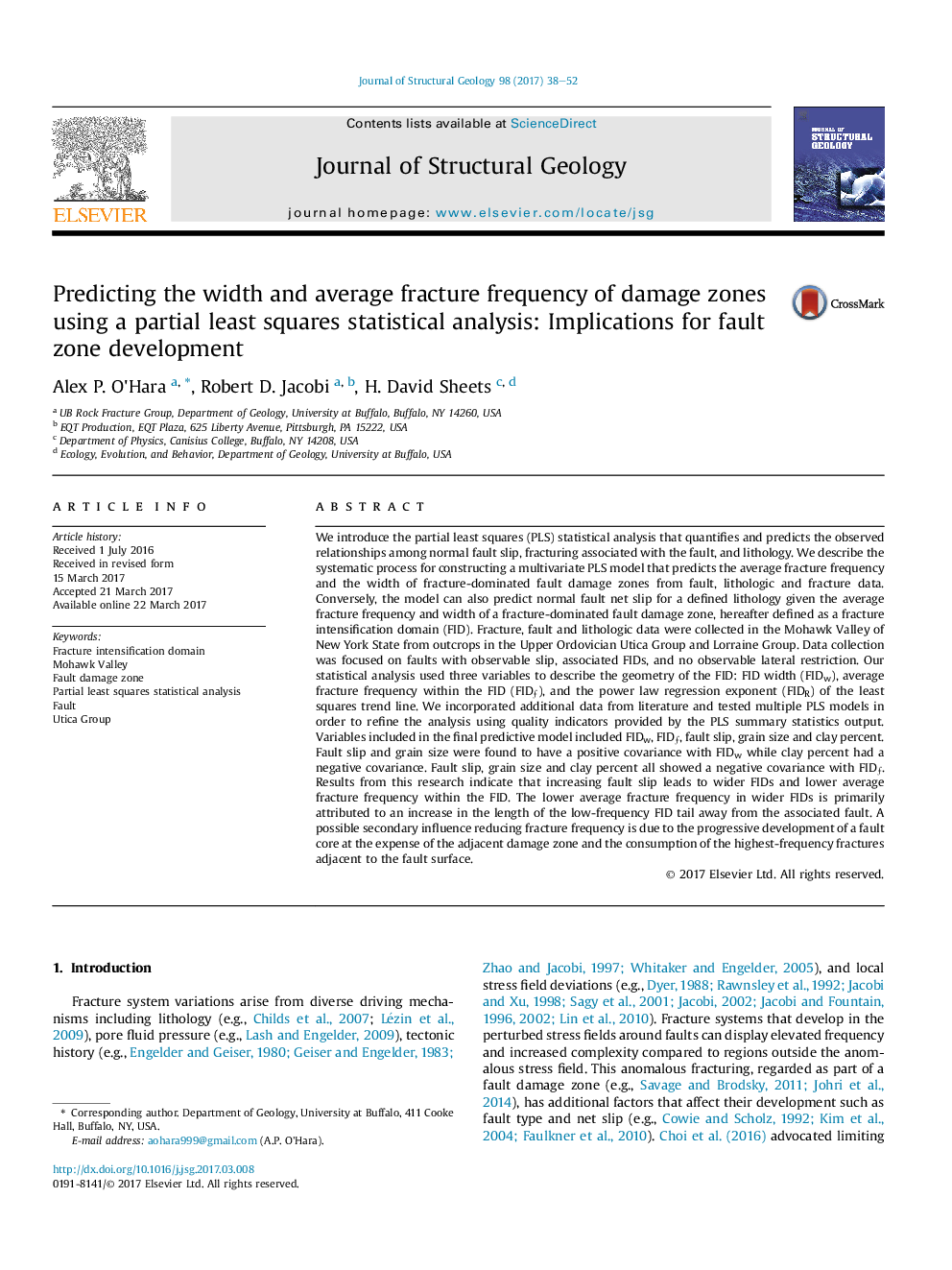| Article ID | Journal | Published Year | Pages | File Type |
|---|---|---|---|---|
| 5786317 | Journal of Structural Geology | 2017 | 15 Pages |
Abstract
We introduce the partial least squares (PLS) statistical analysis that quantifies and predicts the observed relationships among normal fault slip, fracturing associated with the fault, and lithology. We describe the systematic process for constructing a multivariate PLS model that predicts the average fracture frequency and the width of fracture-dominated fault damage zones from fault, lithologic and fracture data. Conversely, the model can also predict normal fault net slip for a defined lithology given the average fracture frequency and width of a fracture-dominated fault damage zone, hereafter defined as a fracture intensification domain (FID). Fracture, fault and lithologic data were collected in the Mohawk Valley of New York State from outcrops in the Upper Ordovician Utica Group and Lorraine Group. Data collection was focused on faults with observable slip, associated FIDs, and no observable lateral restriction. Our statistical analysis used three variables to describe the geometry of the FID: FID width (FIDw), average fracture frequency within the FID (FIDÆ), and the power law regression exponent (FIDR) of the least squares trend line. We incorporated additional data from literature and tested multiple PLS models in order to refine the analysis using quality indicators provided by the PLS summary statistics output. Variables included in the final predictive model included FIDw, FIDÆ, fault slip, grain size and clay percent. Fault slip and grain size were found to have a positive covariance with FIDw while clay percent had a negative covariance. Fault slip, grain size and clay percent all showed a negative covariance with FIDÆ. Results from this research indicate that increasing fault slip leads to wider FIDs and lower average fracture frequency within the FID. The lower average fracture frequency in wider FIDs is primarily attributed to an increase in the length of the low-frequency FID tail away from the associated fault. A possible secondary influence reducing fracture frequency is due to the progressive development of a fault core at the expense of the adjacent damage zone and the consumption of the highest-frequency fractures adjacent to the fault surface.
Keywords
Related Topics
Physical Sciences and Engineering
Earth and Planetary Sciences
Geology
Authors
Alex P. O'Hara, Robert D. Jacobi, H. David Sheets,
